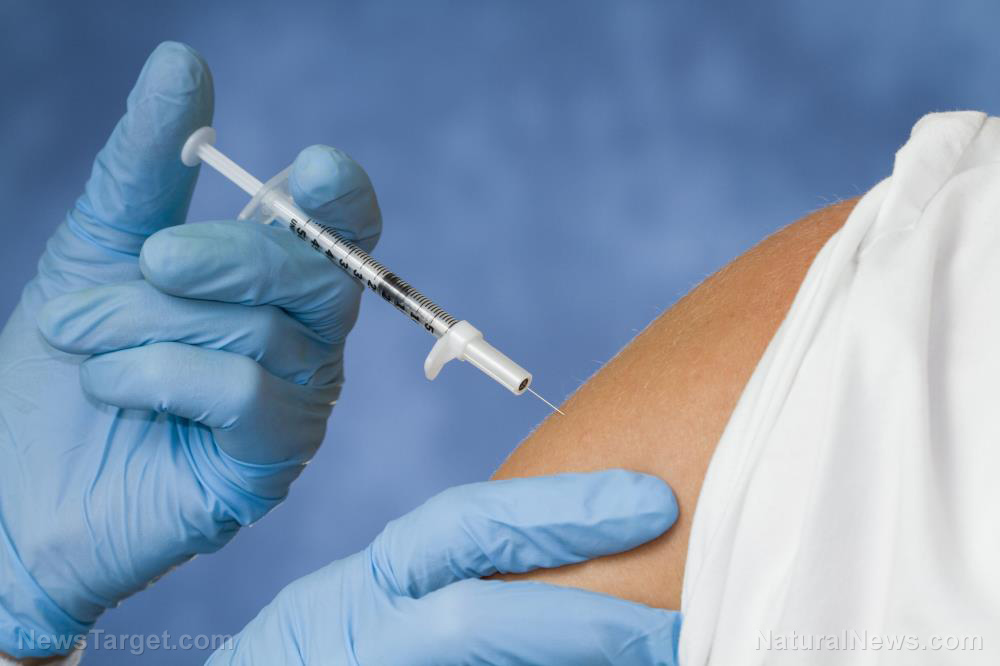Study: Vaccinated children shed COVID-19 virus up to 3 times LONGER than unvaccinated kids
11/28/2023 / By Zoey Sky

A research letter published on Oct. 23 in the journal JAMA Pediatrics has found that children given the Wuhan coronavirus (COVID-19) vaccine and those who were unvaccinated both shed the virus for at least three days.
The results of the research led the scientists to suggest that school policies requiring students with COVID-19 to stay at home for five days are appropriate.
But while all the unvaccinated children in the study were clear of the virus by day six, 10 of the 52 vaccinated children (19 percent) took double the time to be virus-free. Three subjects (about six percent) were still infectious on day 10, a period that is three times longer than the reported median.
How long the children remained contagious after a COVID-19 diagnosis remains a discussion topic, despite global data confirming that children overwhelmingly survive infection.
Another study also revealed that children rarely transmit the virus to adults, which is unsurprising because a 2021 study found that, compared with swabs from adults, the nose/throat swabs from infected children were only half as likely to contain a virus capable of causing illness.
Vaccinated children just as likely to pass on COVID-19 as unvaccinated kids
Between April and September 2022, Neeraj Sood, a health policy expert at the University of Southern California, and his fellow researchers recruited 76 children aged seven to 18 with a positive PCR test for COVID-19.
Half of the young volunteers were male and 68.4 percent (52 subjects) were vaccinated for COVID-19.
Out of the vaccinated children, 35 had received two doses, 15 received a third shot or booster and two did not provide details.
The research team took throat swabs from the subjects on the day they tested positive (day 0), and every two days thereafter up to day 10. The samples were tested for their ability to infect cultured cells through a “cytopathic” or cell-changing effect.
Cytopathic assays use microscopes that are not powerful enough to see viruses or their entry into cells but look for visually obvious changes over time in test cells exposed to the viral swab. Microscopic examinations occurred on days six, eight and 10.
The researchers discovered that the “median duration of infectivity” or how long a child was infectious was three days for both the vaccinated and unvaccinated volunteers.
The median of a dataset is the middle value, with an equal number of values above and below. The average (mean) equals all the values divided by the number of total entries.
The mean and median of the same data can be different. However, Sood’s tactic of designating the 20 percent of his subjects who continued to shed the virus for up to 10 days as “outliers” is questionable, especially since they were vaccinated.
Figure 1 from the results revealed that the 10 vaccinated subjects (19 percent) who remained contagious at the end of day six were not outliers and their infectious status was not a rare, unexplained event but something common for this dataset.
Using median instead of mean infectivity duration minimizes the significance of much of the vaccinated subject data in Sood’s study. The approach is also wrong for the unvaccinated group because the data is “tightly distributed around the three-day mark with no outliers.”
Equating median values for the vaccinated versus the unvaccinated allowed the research team to combine data from the two groups and report that 14 participants (18.4 percent) were infectious on day five and three (3.9 percent) were still shedding on day 10.
The data researchers reported that all subjects still positive after day six were vaccinated, but hiding this fact allowed them to claim, without considering the more informative mean values, that “there was no association between duration of infectivity and vaccination or booster status.”
This contradiction is evident in Figure 1B, which shows the percentage (vertical axis) of vaccinated (orange solid line) and unvaccinated (black solid line) subjects contagious since their initial COVID-19 diagnosis in days (horizontal axis).
The numbers below the graph represent the number of patients still shedding the COVID-19, with the “unvaccinated” and “vaccinated” groups shown separately.
By day six, none of the unvaccinated subjects were contagious but 10 vaccinated patients were still shedding the virus.
On day 10, when the last cell infection test was conducted, three of the vaccinated subjects were still shedding the virus. (Related: Study links Pfizer’s COVID-19 vaccine to VAIDS in children.)
Visit VaccineDeaths.com for more about the negative impact of COVID-19 vaccines.
Watch the video below as Health Ranger Mike Adams and Dr. Pierre Kory talk about treatment protocols for COVID-19 vaccine INJURIES and spike protein toxicity.
This video is from the Health Ranger Report channel on Brighteon.com.
More related stories:
Mom sues D.C. doctor who gave her children covid “vaccines” without consent.
HALF of all UK children are PERMANENTLY DAMAGED by covid lockdowns, study finds.
Sources include:
Submit a correction >>
Tagged Under:
big government, Big Pharma, biological weapon, children's health, covid-19, infections, outbreak, pandemic, pharmaceutical fraud, research, science clowns, science deception, science fraud, spike protein, truth, vaccine damage, vaccine injury, vaccine wars, vaccines
This article may contain statements that reflect the opinion of the author
RECENT NEWS & ARTICLES
COPYRIGHT © 2017 SCIENCE CLOWNS




















